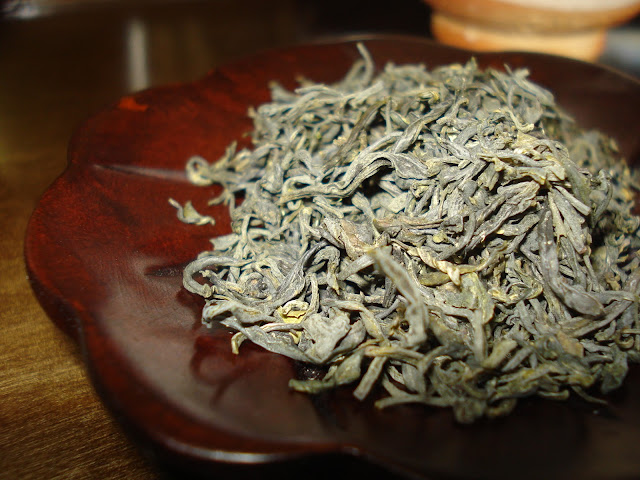I am very lucky to have the opportunity to try this tea. I,m guessing that the making of this tea was a joint effort between Brother Anthony and Yi Ho Yong. I really don,t know anything else about it, and maybe that,s for the better.
In the opening pages of The Korean Way Of Tea by Brother Anthony and Hong Kyeong-Hee ask the reader to imagine what it would be like to arrive at a home in the early morning hours. The host has brought water from a mountain spring and made tea for you with leaves harvested from her own tea bushes, made with her own two hands. Nothing but the sounds of a bubbling mountain spring and fresh, crisp, spring air. Well, evidently, this tea was made by the very same person they are referring to in the book. I am honored!
Brother Anthony
A few weeks ago I received a package from Arthur and he kindly included this tea along with the others I had ordered. Thank you Arthur! He couldn't remember which he had sent, hence the title of this post. If I had to guess I would say this is Sejak, the dry leaves are a little thicker and chunkier than I would expect from an Ujeon. I have only had Ujeon once before so it,s not as though I really know what I,m talking about here.
The aroma from the dry leaf is pristine, clean and sweet. Notes of pine, grain and florals. Very pungent but not heavy. Why can,t all my green teas smell so gorgeous? I wonder how much this tea costs?
The sweet smell of toasted grain and pine wafts from the pot as I pour out the first infusion. Very rich but delicate and balanced. A tad too yellow for a Ujeon, don,t ya think?
The second infusions color is much more yellow and not quite as clear as the first, it,s also sweeter. What I find interesting about this tea is that it has a very full and rich mouth feel but the flavors are never heavy and dull. When the tea starts to fade in later infusions it,s flavor and aroma stays very clean and pure. As opposed to heavy dull and chalky.
Tiny, tiny little baby leaves, what a pain this must have been to harvest. A labor of love I guess. God Bless Em!

























.JPG)
.JPG)






.JPG)




.jpg)


